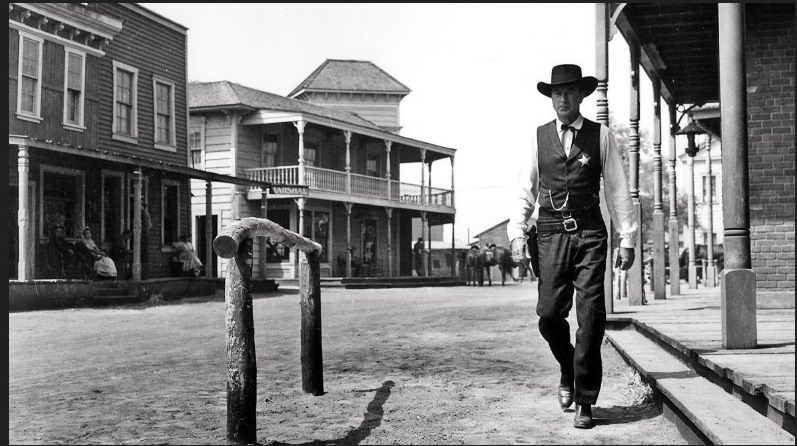by Bill Grinnell
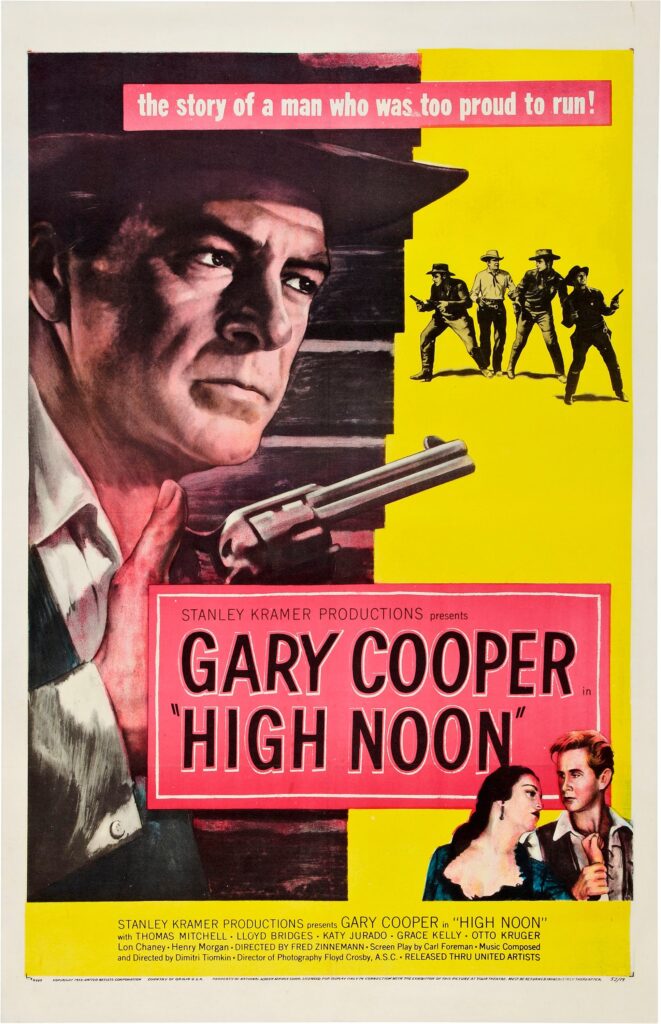
High Noon was about a lot more than just a man standing up to evil. Westerns used to be more that just Westerns. I’m willing to bet most people don’t know that. Westerns (along with Sci-Fi) were used for years as a way to disguise social and political commentary. Audiences would look at them and say “there’s no politics in this. It’s just a story about a guy in the Old West.” But if they have the inside knowledge, or figured it out for themselves, they would see that below the surface there was often deep political commentary. For Westerns, the greatest of all these was High Noon. In the Spring of 1952, High Noon took on the biggest red hot topic of the day–McCarthyism.
The Red Scare
The Second Red Scare took place between 1946 and about 1954. After the Second World War there was a growing belief that Communists were infiltrating the government in order to subvert or otherwise spy on it. This fear spread to Hollywood as well. Conservatives feared that “Reds” in Hollywood were secretly and subtly injecting leftist propaganda into movies to slowly indoctrinate the public.
Step by step, the onset of the Cold War, the Alger Hiss case, the Soviet development of their own atomic bomb, the fall of China to the Communists and the subsequent invasion of South Korea added fuel to the fire.
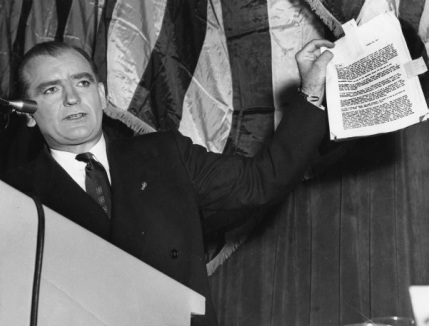
Then in 1950, an unaccomplished Senator from Wisconsin named Joe McCarthy brazenly claimed in a speech that he had a list of “over 200 Communists in the State Department,” waving about a piece of paper that he never allowed anyone to see. Despite being unable to produce any evidence to back up his claim, McCarthy caught on with the American people. Using demagogic, unsubstantiated accusations, smear tactics, and attacks on the character or patriotism of his victims and opponents, McCarthy caught fire with an American public primed for “the angry lone savior.”
Carl Foreman
Screenwriter Carl Foreman had been a member of the Communist Party from 1938 through 1942. He became disillusioned with the party and left. After the war he wrote a string of well received screenplays including Champion, Home of the Brave, The Men, and Young Man with a Horn.
In 1947, the House Un-American Activities Committee (HUAC) summoned 10 people from the film industry. They were charged with subversion and of injecting Communist propaganda into their films. The committee demanded that they name names and also admit their political beliefs.
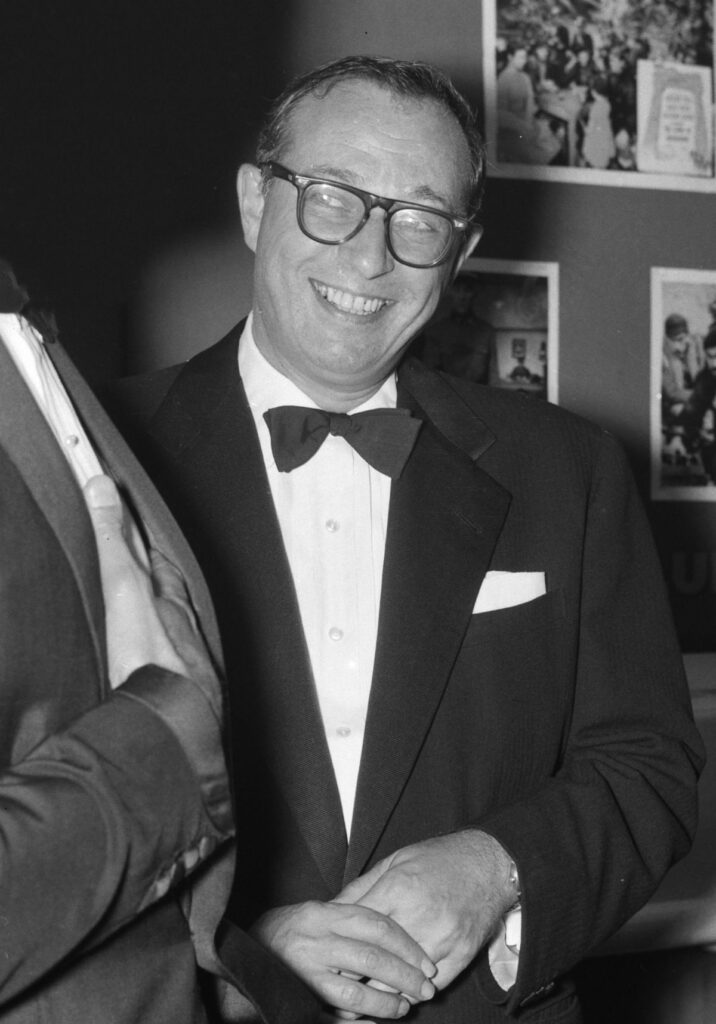
All ten refused and were cited with contempt of Congress. Each was officially blacklisted in Hollywood. They became known as “The Hollywood Ten” and famously included Dalton Trumbo and Ring Lardner Jr.
Foreman was disgusted by the way almost everyone in the industry failed to back up and defend the ten because they feared being drawn into the net. It served as the basis for the understory in High Noon. Little did he know that he would be dragged into this same net in the middle of shooting the film.
Understanding the hidden theme of McCarthyism in High Noon
To the average movie goer who was looking for no more than entertainment and diversion from their daily lives, High Noon would have been seen as being “about” the following:
A convicted killer who vowed to kill the Sheriff that sent him away is paroled from prison. His gang enters the town awaiting his arrival at noon that day. The Sheriff tries to deputize townspeople to help put down the trouble that is coming. Everyone eventually refuses and the Sheriff is left to defend the town on his own. After he succeeds and the town rallies around him, the Sheriff leaves town, disgusted with the townspeople.
You might already be drawing the parallels. But what is described here is nothing short of a very boiled down version of the plot of High Noon. If you’ve read my page Film or Movie? you’ll know that this would be called “a movie.” Something that has no deeper meaning or message. But High Noon is much more than that.
High Noon as Parable and an Allegory
It’s both. A parable is a simple story used to illustrate a moral, as in “the moral of the story.” High Noon is definitely a simple story. It also has a moral: Do what’s right. Don’t underestimate evil. Failing to stand up for friends leads to them rejecting you.
An allegory is a story that can be interpreted to reveal a hidden meaning, typically a moral or political one. You’ve already been clued in to what the hidden meaning is: McCarthyism. If you’ve seen the movie you might be saying to yourself “How? I don’t get it.” I’ll walk you through it.
McCarthyism
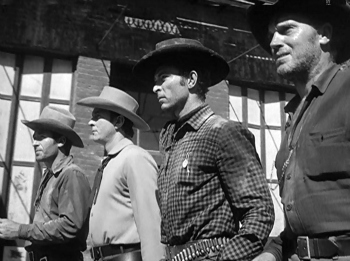
Miller and his criminal gang are McCarthyism. They’re a threat. In real life, the threat was on freedom of speech and thought. Here it’s returning the town to a lawless state. Foreman made it a simple, tangible threat that audiences would understand rather than about the ideal of freedom of speech. You immediately understand it on a visceral level. The threat is very real.
The Hollywood Ten and Opponents of McCarthyism

Kane is the Hollywood Ten and anyone else who stood up for our rights. He even becomes Foreman himself when he was subpoenaed to come before Congress during the making of the film. Everyone around both Kane and Foreman told them to play it safe. In the movie it’s “get out of town.” In real life it’s “just confess and cooperate.” Again, Foreman kept it simple for the movie. Something everyone can identify with: fight or flee. But Kane, the Ten and Foreman acted out of conscience. They stuck to their principles and did what they thought to be the right thing.
Hollywood Liberals

The townspeople represent Hollywood liberals. They feel Miller will go away if Kane is not there and that they will only be in danger if they step up and help Kane. The parallel should be obvious. Hollywood liberals feared that by standing up it would be taken to mean that they were Communists or Communist sympathizers. So they kept out of it.
Conservatives
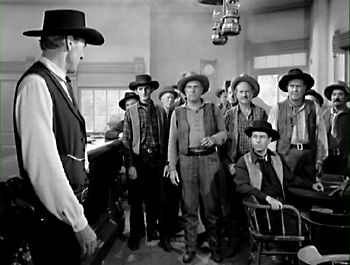
Characters such as the hotel owner, the bartender and the patrons of the saloon represent conservatives. They thought things were just fine before Kane came along and ruined everything. During McCarthyism, conservatives were enthusiastically supportive. They thought liberals had weakened the country for twenty years and were all too glad to have McCarthy turn things around.
Conflicted Characters
The characters Amy Fowler Kane, Deputy Harve Pell, Helen Ramírez, and former Marshall Martin Howe represent the general American public. They have firm beliefs about right and wrong, but feel the other side has valid points as well. It’s hard for them to choose. In the beginning the American public was the same way. They had very strong beliefs about our Freedoms while at the same time feeling that if Communists are infiltrating our institutions that it should be looked into. It was only when they saw the reality of McCarthyism that they turned against it.
The choice these conflicted characters are making is more confusing. Each has to choose between standing by Kane or staying out of it. But each one does different things and each one looks at the choices in different ways:
Amy Fowler Kane
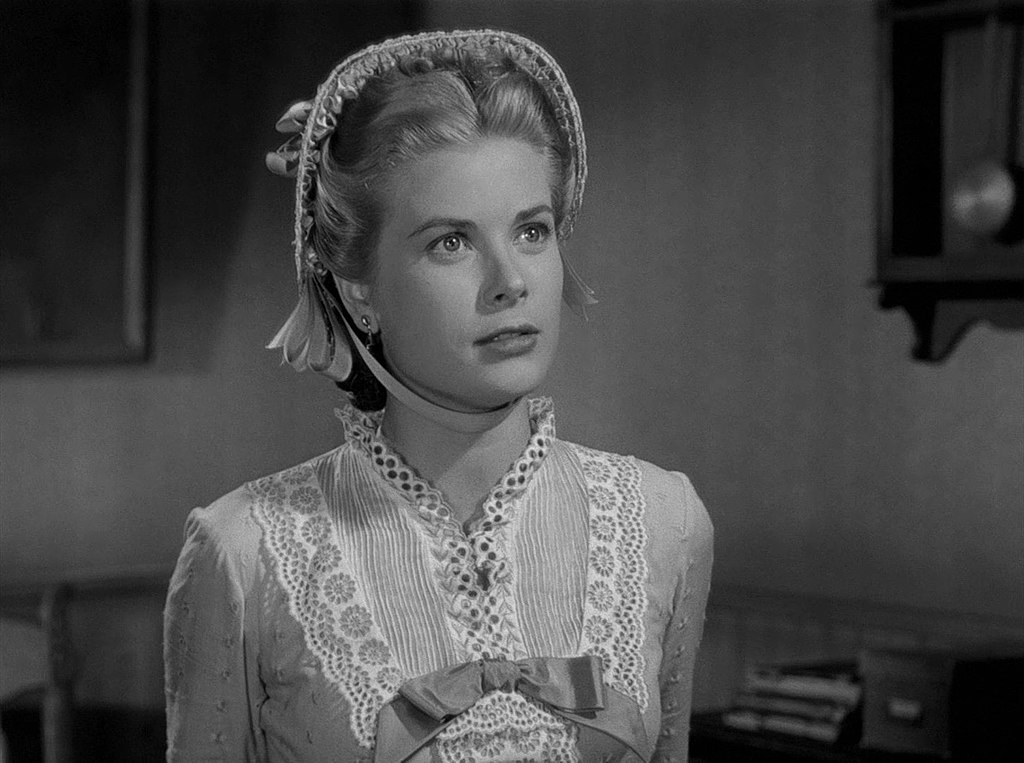
Amy Fowler Kane’s choice is simple. Stand by her husband or stick to her Quaker beliefs about Pacifism. She knows Miller is evil but her beliefs say don’t fight. She chooses Pacifism and is set to leave town on the same train the brings Miller. It’s only after her talk with Helen Ramírez and hearing the gunshots while she is on the train that she changes her mind.
Harve Pell
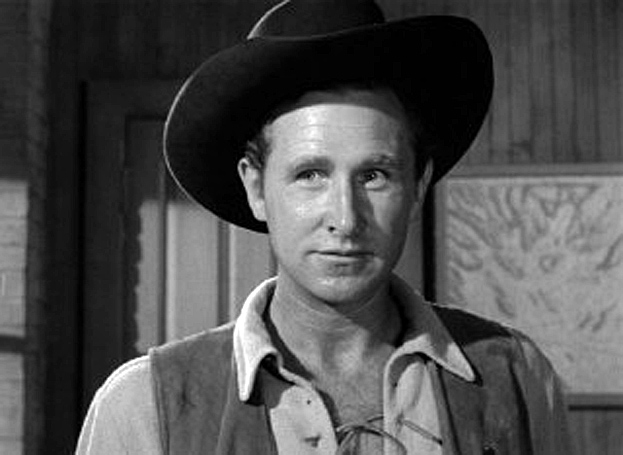
As Deputy, we naturally assume Harve will join Kane. But Herve sees an opportunity and tells Kane his help comes at a price–to be the new Marshall. Kane refuses. Harve feels so guilty about it he spends the rest of the movie in the Saloon, trying to drown out his guilt. In the end, he may want to help but he’s too drunk to do anything about it.
Helen Ramírez

Helen Ramírez has a very complicated choice. She was romantically involved with both Kane and Miller. Helen knows what Miller is, but she was also jilted by Kane. Because she knows what’s right to do, we think she would stand by Kane. But she doesn’t think Kane will win and fears Miller’s return. She chooses to leave town.
Martin Howe
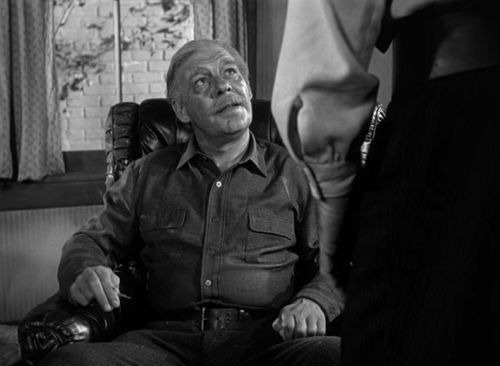
As a former Marshall and Kane’s mentor, we surely expect him to help. Martin knows Kane’s choice is correct, but he’s jaded. He tells Kane law men do all these things and then just end up dead on some dusty street. “For what? For nothing, for a tin star.” He also worries Kane will get killed trying to protect him because he is old and arthritic.
Some Americans like Amy chose to stay out of it only to change their minds once they saw the reality. Others like Harve chose to stay out of it and felt guilty. Some like Helen knew McCarthyism was wrong from the beginning but chose to protect themselves. And some like Martin felt that nothing they did would matter.
In the end…
High Noon plays all of this out for the audience to absorb and contemplate. The movie very clearly concludes that McCarthyism is wrong and that it is wrong to refuse to stand up against it. The movie ends up with a good, old fashioned gunfight, but what it is saying is that McCarthyism can be defeated by standing up to it. Some audience members won’t see the hidden commentary at all, while others will see it and either agree or disagree. Either way, it’s one of the two greatest Westerns ever made.
